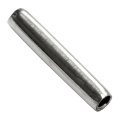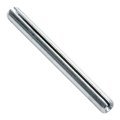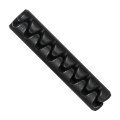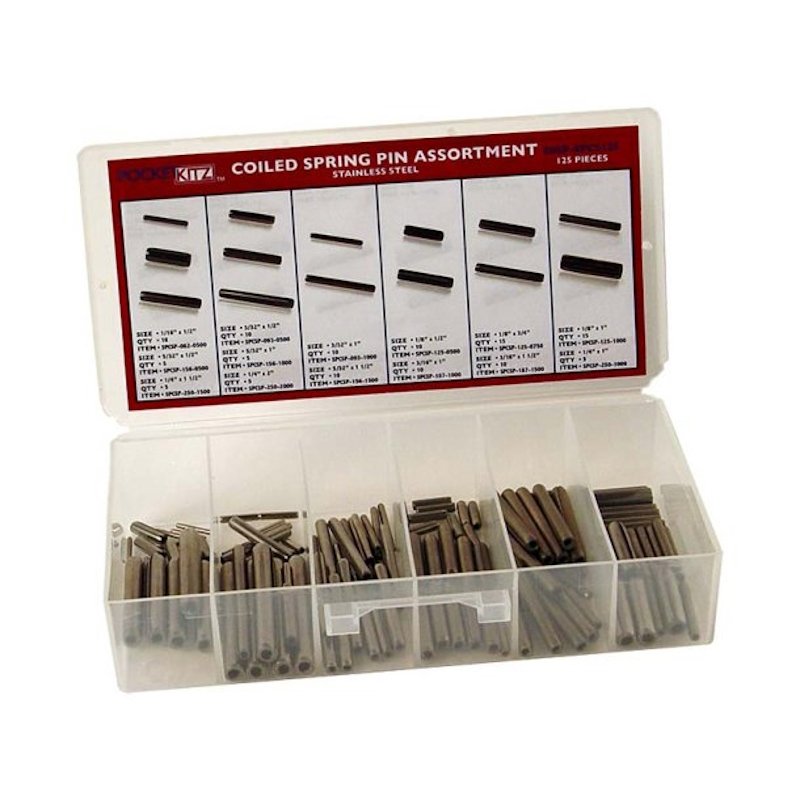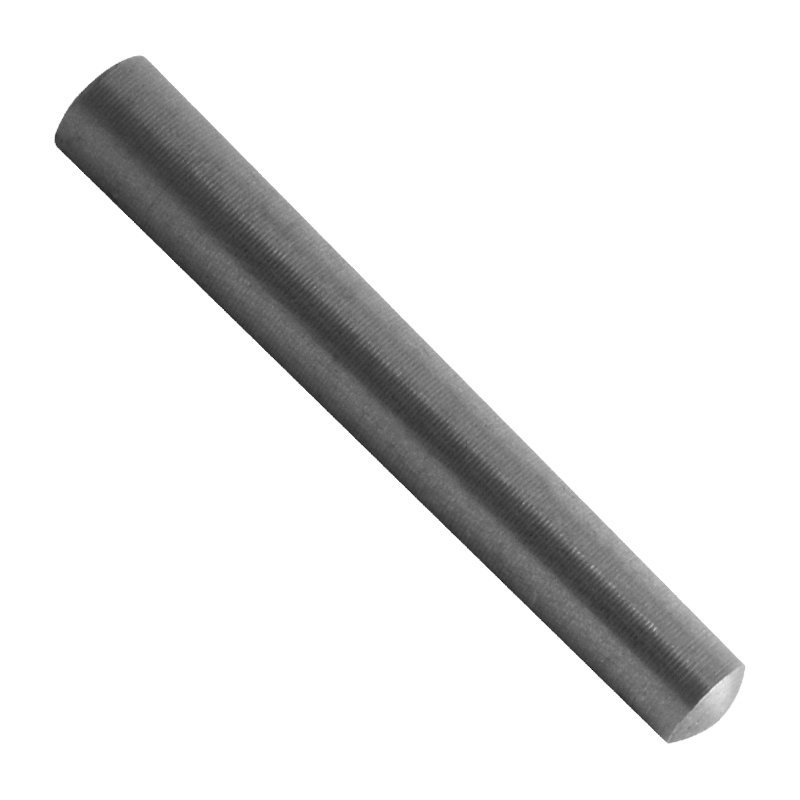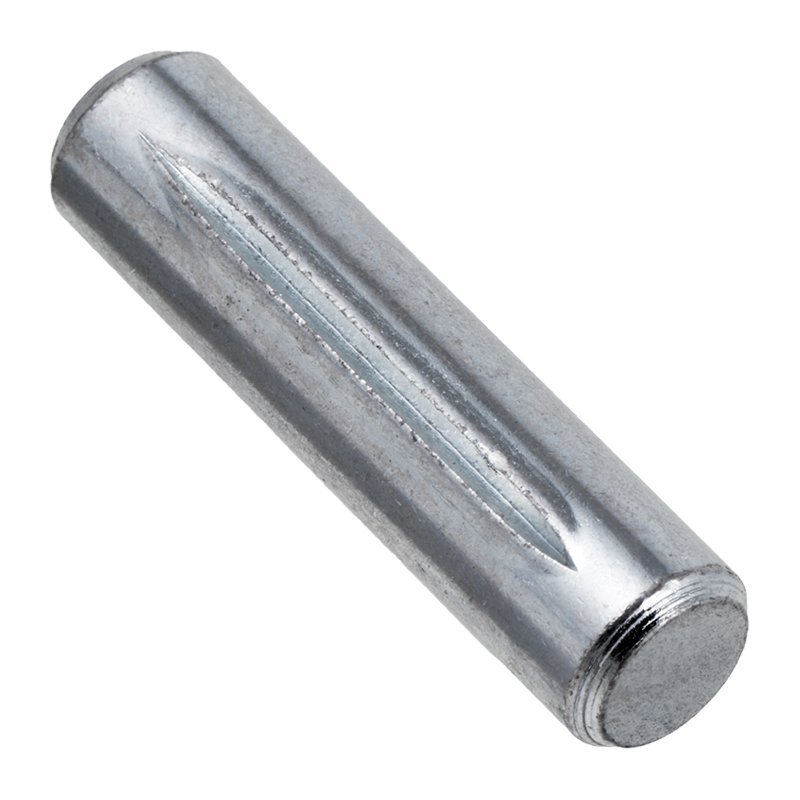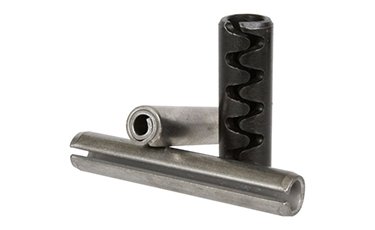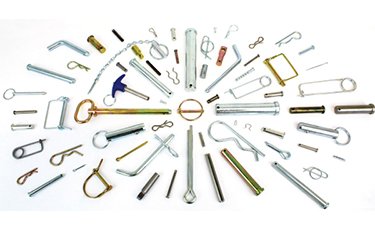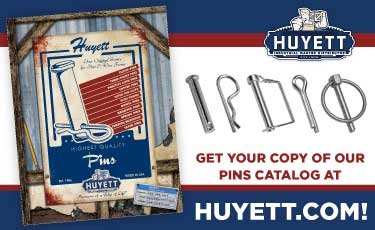Spring Pins
Spring Pins and Rolled Pins
Spring pins - which are just as commonly called roll pins or rolled pins - are hollow, cylindrical pins with chamfered ends that press into place. Spring pins are used as locking devices, positioning points, anti-chafing surfaces, shafts, or sleeves for wiring. Huyett’s large assortment of spring pins are available in a variety of materials, finishes, and sizes.
It is important to note that a
spring pin
and a
roll pin
are the same thing - the pin design lends itself to both descriptions. As the pin compresses into place, it tries to spring back into shape - this creates the tension that keeps it in place. Its design also causes it to roll over itself as it's forced into the mating hole.
Application Considerations
Roll pins are designed to hold flat, washer-like or shaft components in place by being placed into a hollow hole in the shaft and exerting force against the shaft wall. This means the pin will experience tension, compression, shear stress, and other forces during performance. When buying rolled pins, there are several important questions to consider about your specific application.
- What load will the roll pin need to bear?
- How does the pin diameter compare to the hole diameter?
- What kind of shear stress will the application put on your pin?
- Will the pin act as a stop, a locking device, a positioning point, a sleeve, etc.?
- Is this a temporary hold and are you planning on reusing the pin?
- Will you need a heavy-duty option?
- Do you need a specific material or finish to withhold environmental elements?
Benefits
Roll pins offer a variety of benefits over other types of fasteners, specifically if you are looking for a simple, economical solution for your application.
A spring pin is:
- Cost effective, especially if you need large amounts
- Simple to install and remove in most cases
- Offered in several styles, materials, and finishes to accommodate light-weight or heavy-duty applications
- Easy on mating material and does not cause damage
- Flexible to fit in a wide range of hole diameters
- Versatile in blind and through-hole uses
Spring Pin Product Lines
Huyett offers Spirol® coiled spring pins and slotted spring pins. We also offer large diameter spring pins from Heritage Industrial® and ExpanPin® super-duty slotted toothed spring pins.
How to Use a Spring Pin
A roll pin is used to in many ways. It can hold a shaft device in place, secure rotating elements, transmit torque from a position point, keep washers from moving, serve as a sleeve for wiring, etc. Regardless of its application use, it is installed in a straightforward manner.
To install a rolled pin in small or custom settings, simply insert it into the mating hole and hammer it into place. Large-volume installations may require the use of a pin driving chuck and a press or air hammer, or even an automatic inserter.
Roll pins will either be inserted in a through hole (a hole with an exposed end) or a blind hole (a hole with a closed end). To remove the pin from a through hole, insert a punch into the pin center and tap it out with a hammer. To remove a roll pin from a blind hole, grip it with a pair of pliers or thread a self-tapping screw into the center until the threads catch the material - then pull the screw out with a pair of pliers.
Types of Spring Pins
Huyett offers roll pins in three distinct styles: coiled, slotted, and toothed.
Coiled Spring Pin: This pin (also called a spiral pin) rolls - or coils - around itself to change diameter as it is pressed into a hole. The coil offers flexibility, which makes it ideal for out-of-shape holes because it conforms to the empty space. Coiled pins work well for alignment, sleeving, positioning, and applications that require resistance to vibration.
Slotted Spring Pin: This design is the most simple of the three, but it is just as effective. The slot down the middle allows it to compress during installation and stay closed during performance. Slotted pins have two added benefits - you can insert one into the other for extra shear strength, and you can also use the slot to clasp a mating component.
Toothed Spring Pin: This pin is suited to precision and/or heavy-duty applications. It features a unique tooth design that gives it more resistance to vibration or lateral movement than a slotted pin but is still lighter and easier to install than a solid pin.
For more information on different types of roll pins, read our
Introduction to Spring Pins Guide.
Difference Between a Spring Pin and a Dowel Pin
The most obvious difference between a roll pin and a
dowel pin is that a roll pin is hollow and most dowel pins are solid.
Dowel pins are short, solid cylinders that align or join components and are made of plastic, metal, or wood. The most important difference between the two pins is that dowel pins are designed for use in precision applications to keep components aligned and stationary. Rolled pins are used to keep components in place, but do not require precise alignment.

